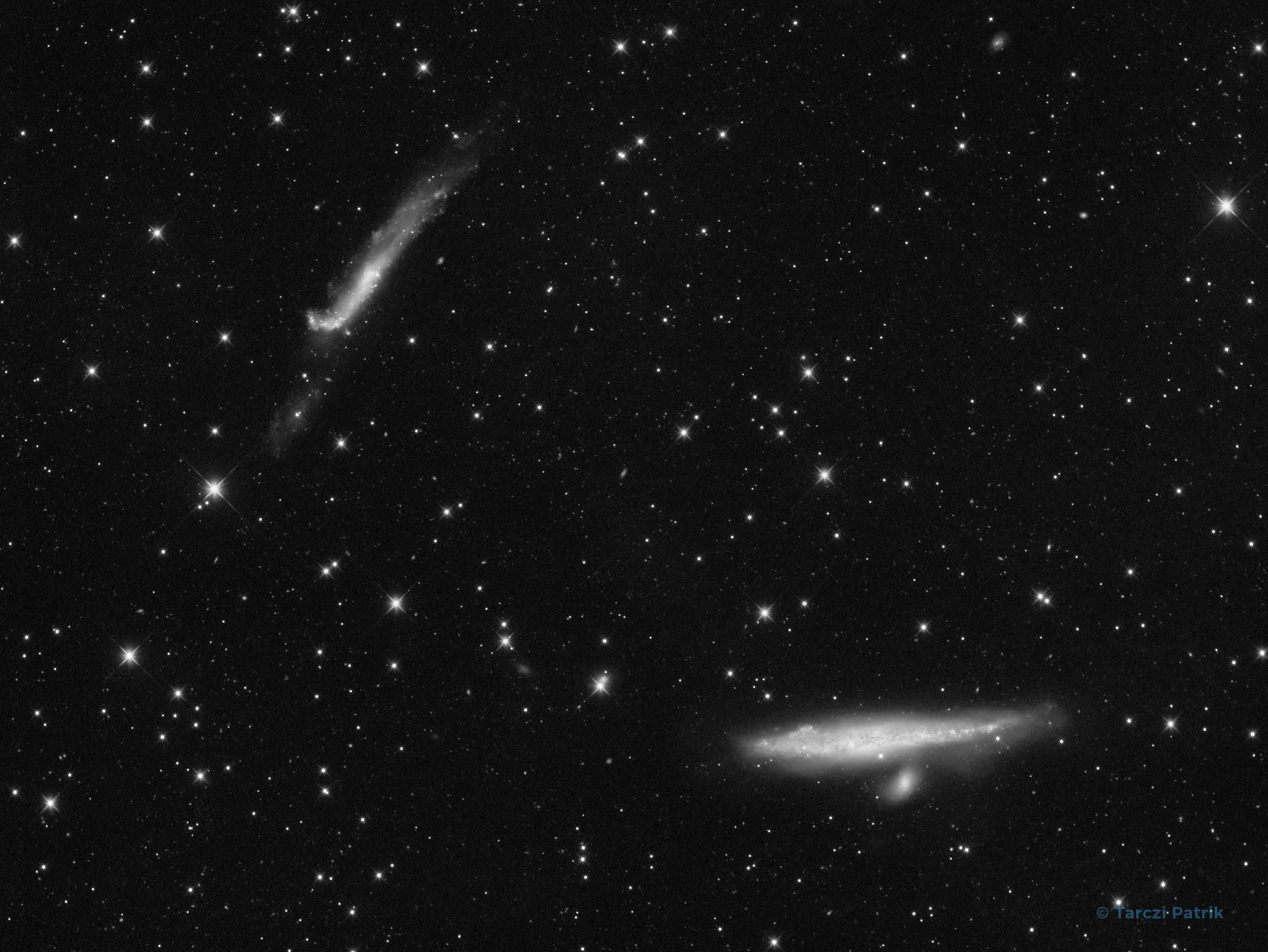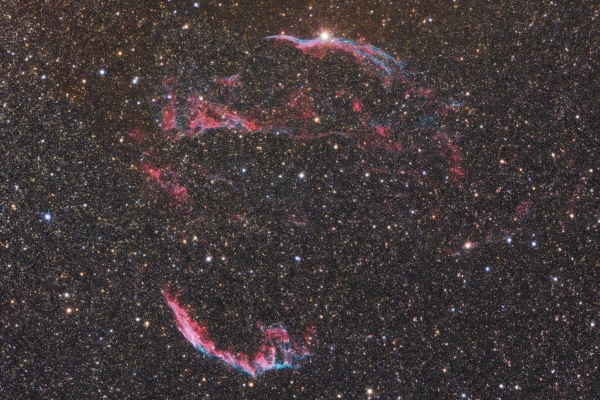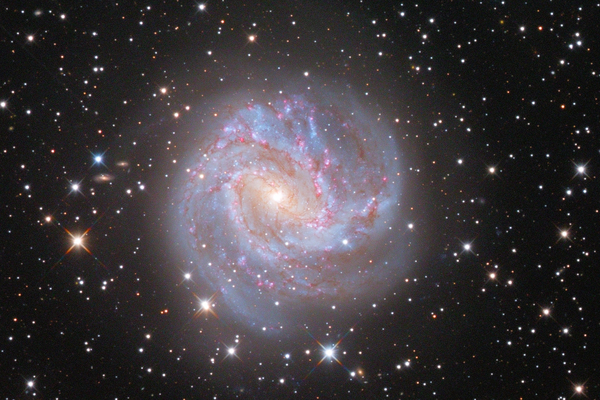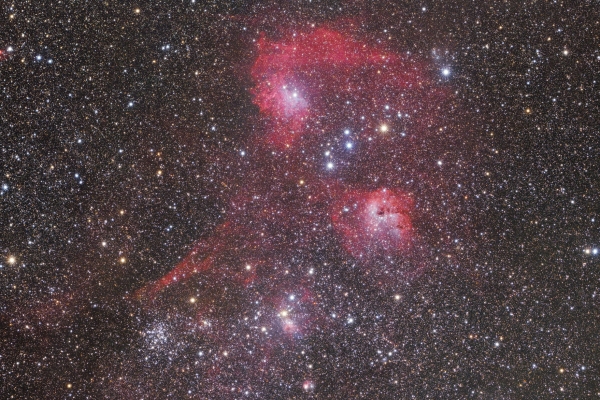The Whale and The Hockey Stick
NGC 4631 and NGC4656

Technical data
| Instrument: | 173/700 Newton-astrograph (ZsIO), SkyWatcher comacorrector F/4 |
| Camera: | Atik One 6.0 |
| Filter: | Baader UV/IR block |
| Mount: | SkyWatcher NEQ6 Pro Synscan (modified) |
| Guiding: | Lacerta M-Gen autoguider, OAG |
Image data
| Exposure time: | L: 20 * 10 mins |
| Location, date: | Hungary, Izsákfa - 2016. April |
| Transparency: | 7/10 |
| Temperature: | 9 °C |
| FWHM: | 2.50" |
| Processing: | CCDStack, Registar |
Photo in progress:
Description
NGC 4631 is a big beautiful spiral galaxy seen edge-on (bottom right) only 25 million light-years away towards the small northern constellation Canes Venatici. This galaxy's slightly distorted wedge shape suggests to some a cosmic herring and to others the popular moniker of The Whale Galaxy. Either way, it is similar in size to our own Milky Way. In this gorgeous color image, the Whale's dark interstellar dust clouds, yellowish core, and young blue star clusters are easy to spot. A companion galaxy, the small elliptical NGC 4627, appears below the Whale Galaxy. At the top left is another distorted galaxy, the hockey stick-shaped NGC 4656. The distortions and mingling trails of gas detected at other wavelengths suggest that all three galaxies have had close encounters with each other in their past. The Whale Galaxy is also known to have spouted a halo of hot gas glowing in x-rays. Source: apod.nasa.gov
Technical data
| Instrument: | 173/700 Newton-astrograph (ZsIO), SkyWatcher comacorrector F/4 |
| Camera: | Atik One 6.0 |
| Filter: | Baader UV/IR block |
| Mount: | SkyWatcher NEQ6 Pro Synscan (modified) |
| Guiding: | Lacerta M-Gen autoguider, OAG |
Image data
| Exposure time: | L: 20 * 10 mins |
| Location, date: | Hungary, Izsákfa - 2016. April |
| Transparency: | 7/10 |
| Temperature: | 9 °C |
| FWHM: | 2.50" |
| Processing: | CCDStack, Registar |
Recommended photos

The complex of Veil Nebula
A widefield photo of a famous supernova remnant called Veil Nebula. Located in contsellaton Cygnus.

Southern Pinwheel Galaxy
Southern Pinwheel Galaxy, also known as the M83, is a barred spiral galaxy located in the southern constellation Hydra.

In the heart of constallation Auriga
Rich in star clusters and nebulae, the ancient constellation of the Charioteer (Auriga) rides high in northern winter night skies.


